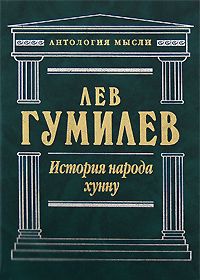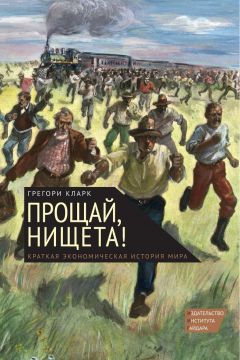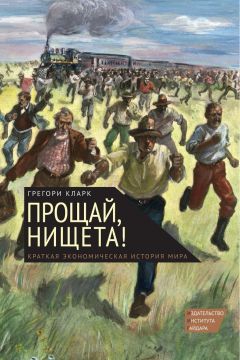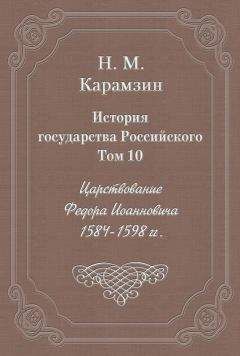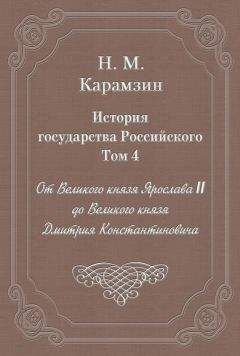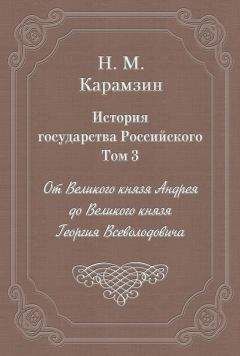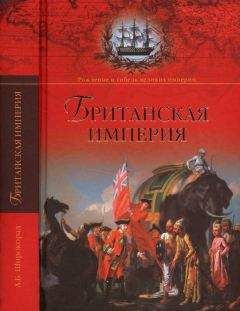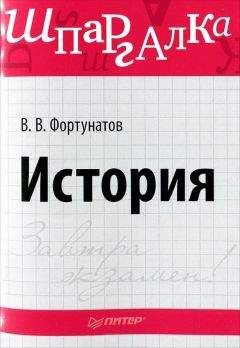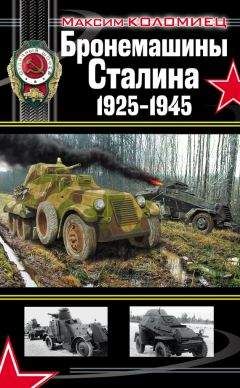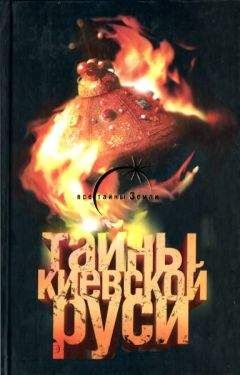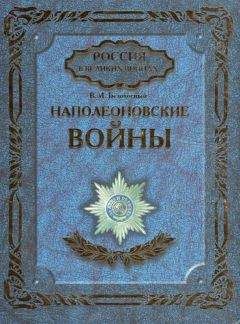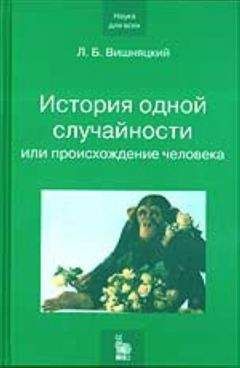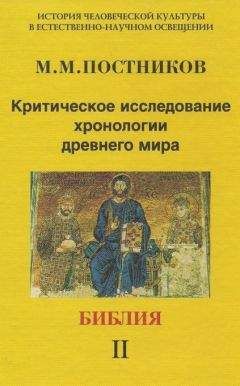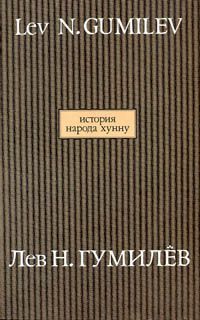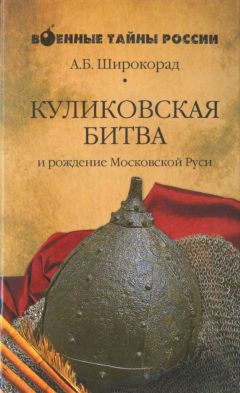Леонид Вишняцкий - Неандертальцы: история несостоявшегося человечества
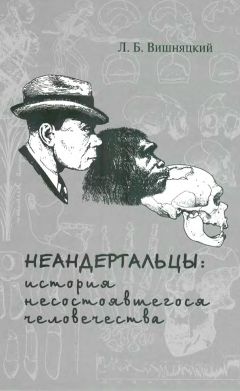
Скачивание начинается... Если скачивание не началось автоматически, пожалуйста нажмите на эту ссылку.
Жалоба
Напишите нам, и мы в срочном порядке примем меры.
Описание книги "Неандертальцы: история несостоявшегося человечества"
Описание и краткое содержание "Неандертальцы: история несостоявшегося человечества" читать бесплатно онлайн.
Неандертальцы не были нашими прямыми предками, но, тем не менее, они наши ближайшие родственники, и у нас с ними очень много общего. Называть их тупиковой ветвью эволюции, по мнению автора этой книги, столь же неверно, как неверно применять этот эпитет по отношению, скажем, к коренному населению Тасмании и другим первобытным популяциям людей, уничтоженным в результате европейской колонизации. Скорее, неандертальцев следует считать "дублерами" гомо сапиенс, запасным вариантом антропогенеза. Почему же история выбрала нас, а не их? Как происходил этот выбор? Что сыграло в нем решающую роль? Был ли он предопределен заранее или зависел больше от привходящих и потому во многом случайных обстоятельств? Автор рассматривает эти и многие другие вопросы, попутно суммируя и в доступной для неспециалистов форме излагая то, что известно сейчас о происхождении и эволюционной истории неандертальцев, их умственных и языковых способностях, материальной и зарождавшейся духовной культуре, о динамике их расселения и причинах вымирания. По каждой из перечисленных тем учтены наиболее интересные и важные сведения, имевшиеся в распоряжении палеоантропологии, археологии и смежных с ними наук на середину 2010 г. Книга адресована всем, кого занимает древнейшее прошлое человечества - от академиков до студентов и школьников старших классов.
Berger T. £)., Trinkaus E. Patterns and trauma among Neanderthals // JAS. 1995. N22. P. 841-852.
Bergounioux F. M. «Spiritualite» de l'Homme de Neandertal // G. H. R. von Koenigswald (ed). Hundert Jahre Neanderthaler. Cologne; Graz: Bohlau-Verlag, 1958. P. 151-166.
Bermudez de Castro J. M, Martinon-Torres M, Carbonell E., Sarmiento S Rosas A., Van der Made J., Lozano M. The Atapuerca sites and their contribution to the knowledge of human evolution in Europe // EA. 2004. N 13. P. 25-41.
Bernard A., Daux V., Lecuyer C., Brugal J.-P., Genty D., Wainer K., Gardien V., Four el FJaubert J. Pleistocene seasonal temperature variations recorded in the 5180 of Bison priscus teeth // EPSL. 2009. N 283. P. 133-143.
Binant P. La prehistoire de la mort. Les premieres sepultures en Europe. Paris: Editions France, 1991.
Bischoff J. L., Williams R. WRosenbauer R. JAramburu AArsuaga J. L Garcia N., Cuenca-Bescos G. High-resolution U-series dates from the Sima de los
Huesos hominids yields 600 (+oo, -66) kyrs: implications for the evolution of the early Neanderthal lineage // JAS. 2007. N 34. P. 763-770.
Blanc A. Some evidence for the ideologies of early man // S. L. Washburn (ed). The Social Life of Early Man. Chicago: Aldine, 1961. P. 119-136.
Blasco R. Human consumption of tortoises at level IV of Bolomor Cave (Valencia, Spain) // JAS. 2008. N 35. P. 2839-2848.
Bocherens H. Neanderthal dietary habits: Review of the isotopic evidence // J. J. Hublin and M. P. Richards (eds). The Evolution of Hominin Diets: Integrating Approaches to the Study of Palaeolithic Subsistence. Springer, 2009. P. 241- 250.
Bocherens HDrucker D. G.? Billiou Z).? Patou-Mathis M, Vandermeersch B. Isotopic evidence for diet and subsistence pattern of the Saint-Cesaire I Neanderthal: review and use of a multi-source mixing model // JHE. 2005. N 49. P. 71-87.
Воё L.-J., Heim J.-L., Honda К., Maeda S. The potential Neandertal vowel space was as large as that of modern humans // JP. 2002. N 30. P. 465-84.
Воё L.-J., Heim J.-L., Badin P., Abry C. Les Hommes de Neandertal etaient-ils handicapes du conduit vocal? // RP. 2004. N 6. P. 219-262.
Воё L.-J., Heim J.-L., Honda К., Maeda S., Badin P., Abry C. The vocal tract of newborn humans and Neanderthals: Acoustic capabilities and consequences for the debate on the origin of language. A reply to Lieberman // JP. 2007. N 35. P. 564- 581.
Boёda E. Levallois: a volumetric construction, methods, a technique // H. L. Dibble and O. Bar-Yosef (eds). The Definition and Interpretation of Levallois Technology. Madison: Prehistory Press, 1995. P. 41-68.
Boёda E., Geneste J.-M., Griggo C., Mercier N., Muhesen S., Reyss J. L., Taha A., Valladas H. A levallois point embedded in the vertebra of a wild ass (Equus africanus): hafting, projectiles and Mousterian hunting weapons // Antiquity. 1999. N 73. P. 394-402.
Boёda E., Bonilauri SConnan J., Jarvie D., Mercier N., Tobey M, Valladas H., Al Sakhel H., Muhesen S. Middle Palaeolithic bitumen use at Umm el Tlel around 70000 BP // Antiquity 82, 2008a. P. 853-861.
Boёda E., Bonilauri SConnan J., Jarvie D., Mercier N., Tobey M, Valladas H., ^4/ Sakhel H. New evidence for significant use of bitumen in Middle Palaeolithic technical systems at Umm el Tlel (Syria) around 70,000 BP // Paleorient. 2008b. N 34. P. 67-83.
Bookstein F., Schaffer К., Prossinger H., Seidler H., Fieder M., Stringer C., fFefeer G. fF., Arsuaga J.-L., Slice D. E., RohlfF. J., Recheis WMariam A. J., Marcus L. F. Comparing frontal cranial profiles in archaic and modern Homo by morphometry analysis // AR. 1999. N 257. P. 217-224.
borates F. The Old Stone Age. New York: McGrawHill, 1968.
itow/e M. L'homme fossile de la Chapelle-aux-Saints // Annales de Paleontologie. 1911-1913. N6. 11-172; 7,21-56; 8, 1-70.
Ягасе С. L. Refocusing on the Neanderthal problem // AA. 1962. N 64. P. 729- 741.
Brace С. L. The fate of the "Classic" Neanderthals: A consideration of hominid catastrophism // CAn. 1964. N 5. P. 3-43.
Brauer G. Die morphologischen Affinitaten des jungpleis-tozanen Stirnbeines aus dem Elbmtindungsgebiet bei Hahnofersand // Zeitschrift fur Morphologie und Anthropologic. 1980. N 71. P. 1-42.
Brauer G. New evidence on the transitional period between Neanderthal and modern man // JHE. 1981. N 10. P. 467-74.
Brauer G. The origin of modern anatomy: By speciation or intraspecific evolution? // EA. 2008. N 17. P. 22-37.
Briggs A. W., Good J. M., Green R. E., Krause J., Maricic T., Stenzel U., LaluezaFox C., Rudan P., Brajkovic D., Kucan Z, Gusic /., Schmitz R., Doronichev V. В., Golovanova L. V., Rasilla M. de la, Fortea J., Rosas A., Paabo S. Targeted retrieval and analysis of five Neandertal mtDNA genomes // Science. 2009. N 325. P. 318-321.
Brose D. S., Wolpoff M. H. Early Upper Paleolithic man and Late Middle Paleolithic tools // AA. 1971. N73. P. 1156-1194.
Brown PSutikna Т., Morwood M. JSoejono R. PJatmiko, Saptomo E. W., Awe Due R. A new small-bodied hominin from the Late Pleistocene of Flores, Indonesia//Nature. 2004. N 431. P. 1055-1061.
Bruner E. Comparing endocranial form and shape differences in modern humans and Neandertals: a geometric approach // PA. 2008. P. 93-106.
Bruner EHolloway R. L. A bivariate approach to the widening of the frontal lobes in the genus Homo II JHE. 2010. N 58. P. 138-146.
Bruner E., Manzi G. Paleoneurology of an "early" Neandertal: endocranial size, shape, and features of Saccopastore 1 // JHE. 2008. N 54. P. 729-742.
Bruner E., Manzi G., Holloway R. Krapina and Saccopastore: Endocranial morphology in the Pre-Wurmian Europeans // PB. 2006. N 108. P. 433-441.
Bruner E., Martin-Loeches M., Colom R. Brain shape and human variation: from integration to cognition // AJPA. 2010. N 141 (Supplement 50). P. 73-74.
Cameron D. W., Groves С. P. Bones, stones and molecules: "Out of Africa" and human origins. Burlington; San Diego; London: Elsevier. 2004.
Cann R. L., Stoneking M, Wilson A. C. Mitochondrial DNA and human evolution // Nature. 1987. N 325. P. 31-36.
Carbonell E., Bermudez de Castro J\ M., Pares J\ M. et al. The first hominin of Europe // Nature. 2008. N 452. P. 465-470.
CarbonellE., Castro-Curel Z. Palaeolithic wooden artifacts from the Abric Romani (Capellades, Barcelona Spain) // JAS. 1992. N 19. P. 707-719.
Carbonell E., Mosquera M. The emergence of a symbolic behaviour: the sepulchral pit of Sima de los Huesos, Sierra de Atapuerca, Burgos, Spain // CRP. N 5. P.155-160.
Carciumaru M., Moncel M.-H., Anghelinu M., Carciumaru R. The Cioarei-Borosteni Cave (Carpathian Mountains, Romania): Middle Palaeolithic finds and technological analysis of the lithic assemblages // Antiquity. 2002. N 76. P. 681— 690.
Caspari RRadovcic J. New reconstruction of Krapina 5, a male Neandertal cranial vault from Krapina, Croatia // AJPA. 2006. N 130. P. 294-307.
Castro-Curel Z, CarbonellE. Wood pseudomorphs from level I at Abric Romani, Barcelona, Spain // JFA. 1995. N 22. P. 376-384.
Cela-Conde С. У., Ayala F. J. Human evolution. Trails From the Past. New York: Oxford University Press, 2007.
Chase P. G. The cult of the cave bear. Prehistoric rite or scientific myth? // Expedition. 1987. N29. P. 4-9.
Chase P. G. The Emergence of Culture. The Evolution of a Uniquely Human Way of Life. New York: Springer, 2006.
Chase P. G., Dibble H. L. Middle Paleolithic symbolism: A review of current evidence and interpretations // Journal of Anthropological Archaeology. 1987. N 6. P. 263-296.
Chase P. G., Teilhol V. The fossil human remains // P. G. Chase, A. Debenath, H. L. Dibble, S. P. McPherron (eds). The Cave of Fontechevade: Recent Excavations and Their Paleoanthropological Implications. New York: Cambridge University Press. 2009. P. 103-116.
Chiarelli В. Spongiform encephalopathy, cannibalism and Neanderthals extinction // HE. 2004. N 19. P. 81-92.
Churchill S. E. Cold adaptation, heterochrony and Neandertals // EA. 1998. N 7. P. 46-61.
Churchill S. E. Bioenergetic perspectives on Neanderthal thermoregulatory and activity budgets // K. Harvati and T. Harrison (eds). Neanderthals Revisited: New Approaches and Perspectives. Dordrecht: Springer. 2006. P. 113-133.
Churchill S. Franciscus R. G., McKean-Peraza H. ADaniel J. AWarren B. R. Shanidar 3 Neandertal rib puncture wound and paleolithic weaponry // JHE. 2009. N57. P. 163-178.
Cloutier С. Г., Broadfield D. C.? Wolf Г., Halloran A. R. A semi-free ranging chimpanzee (Pan Troglodytes) gives birth at 65 years of age: Implications for delayed reproductive senescence // AJPA. 2009. N 138 (Supplement 49). P. 107.
Condemi S. The Neanderthals: Homo neanderthalensis ox Homo sapiens neanderthalensis? Is there a contradiction between the paleogenetic and the paleoanthropological data? // J. Orschiedt and G.-C. Weniger (eds). Neanderthals and Modern Humans — Discussing the Transition. Central and Eastern Europe from 50. 000-30. 000 B. P. Mettmann: Neanderthal Museum. 2000. P. 287-295.
Coolidge F. L., Wynn T. The Rise of Homo sapiens: The Evolution of Modern Thinking. Chichester: Wiley-Blackwell, 2009.
Coon C. S. The Origin of Races. New York: Alfred A. Knopf, 1962.
Cooper J. H. Did cannibalis and spongiform encephalopathy contribute to the demise of the Neanderthals // MQ. 2000. N 41. P. 175-180.
Curnoe D. et aL Timing and tempo of primate speciation// JEB. 2006. N 19. P. 59-65.
Czarnetzki AGaudzinski Pusch С. M. Hominid skull fragments from Late Pleistocene layers in Leine Valley (Sarstedt, District of Hildesheim, Germany) // JHE. N41. P. 133-140.
D 'Errico F. The invisible frontier. A multiple species model for the origin of behavioral modernity // EA. 2003. N 12. P. 188-202.
D Errico F. The origin of humanity and modern cultures: Archaeology's view // Diogenes. 2007. N 214. P. 122-133.
D'Errico F., Goni M. F. S. Neandertal extinction and the millennial scale climatic variability of OIS 3 // QSR. 2003. N 22. P. 769-788.
D Errico F., Zilhao J., Julien M., Baffler D., Pelegrin J. Neanderthal acculturation in Western Europe? A Critical review of the evidence and its interpretation // CAn. 1998. N 39 (Supplement). P. 1-44.
D Errico F., Henshilwood C., Lawson G., Vanhaeren M, Tillier A.-M, Soressi M., Bresson F., Maureille B., Now ell A., Lakarra J., Backwell L., Julien M. Archaeological evidence for the emergence of language, symbolism, and music — an alternative multidisciplinary perspective // JWP. 2003. N 17. P. 1-70.
DaviesR., Underdown S. The Neanderthals: a social synthesis // CAJ. 2006. N 16. P.145-164.
£)., Hublin J.-J., Holloway R., Ziegler R. On the phylogenetic position of the pre-Neanderthal specimen from Reilingen, Germany // JHE. 1998. N 34. P. 485-508.
Deaner R. O. et al. Overall brain size, and not encephalization quotient, best predicts cognitive ability across non-human primates // BBE. 2007. N 70. P. 115-124.
de Beaune S. A. Essai d'une classification typologique des galets et plaquettes utilises au Paleolithique // GP. 1989. N 31. P. 27-64.
Debenath ADibble H. Handbook of Paleolithic typology. Philadelphia: The University Museum, University of Pennsylvania, 1994.
Defleur A. Les sepultures mousteriennes. Paris: CNRS, 1993.
Defleur A., White Г., Valensi P., Slimak L., Cregur-Bonnoure E. Neanderthal cannibalism at Moula-Guercy, Ardeche, France // Science. 1999. N 286. P. 128-131.
De Giorgio M.,Jacobsson M, Rosenberg N. A. Explaining worldwide patterns of human genetic variation using a coalescent-based serial founder model of migration outward from Africa // PNAS. 2009. N 106. P. 16057-16062.
DeGusta D., Gilbert W. Turner S. P. Hypoglossal canal size and hominid speech//PNAS. 1999. N96. P. 1800-1804.
De Miguel C., Henneberg M. Variation in hominid brain size: How much is due to method? // HOMO. 2001. N 52. P. 2-56.
Doyle W. У., Johnston O. On the meaning of increased fluctuating dental asymmetry: a cross-population study // AJPA. 1977. N 46. P. 127-134.
Подписывайтесь на наши страницы в социальных сетях.
Будьте в курсе последних книжных новинок, комментируйте, обсуждайте. Мы ждём Вас!
Похожие книги на "Неандертальцы: история несостоявшегося человечества"
Книги похожие на "Неандертальцы: история несостоявшегося человечества" читать онлайн или скачать бесплатно полные версии.
Мы рекомендуем Вам зарегистрироваться либо войти на сайт под своим именем.
Отзывы о "Леонид Вишняцкий - Неандертальцы: история несостоявшегося человечества"
Отзывы читателей о книге "Неандертальцы: история несостоявшегося человечества", комментарии и мнения людей о произведении.






